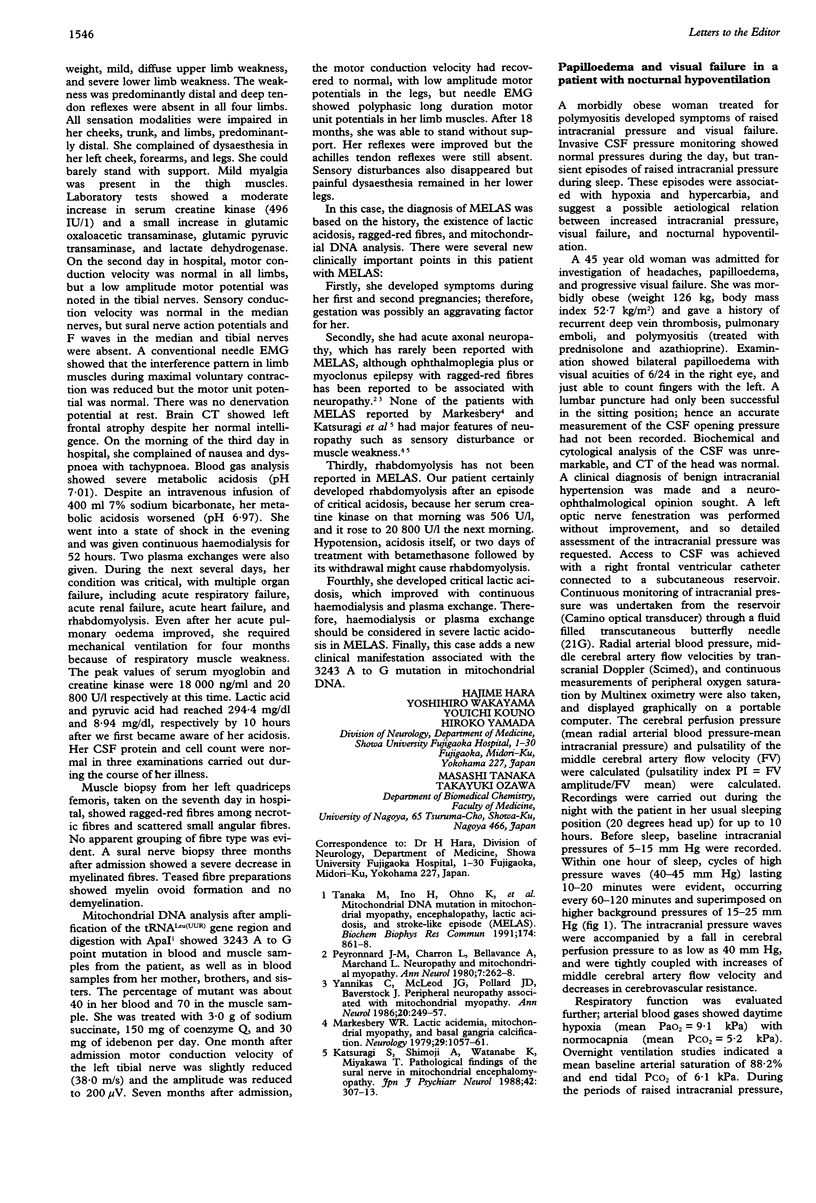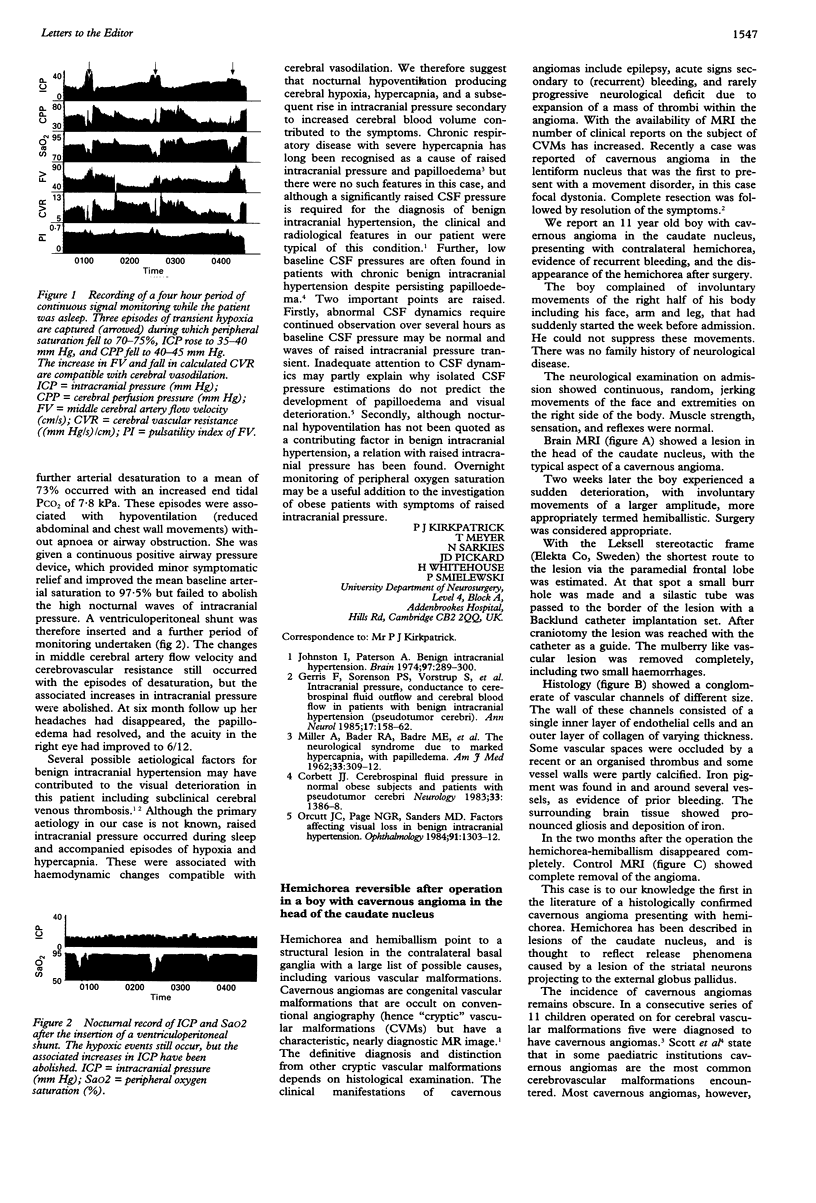Full text
PDF

Selected References
These references are in PubMed. This may not be the complete list of references from this article.
- Corbett J. J., Mehta M. P. Cerebrospinal fluid pressure in normal obese subjects and patients with pseudotumor cerebri. Neurology. 1983 Oct;33(10):1386–1388. doi: 10.1212/wnl.33.10.1386. [DOI] [PubMed] [Google Scholar]
- Gjerris F., Soelberg Sørensen P., Vorstrup S., Paulson O. B. Intracranial pressure, conductance to cerebrospinal fluid outflow, and cerebral blood flow in patients with benign intracranial hypertension (pseudotumor cerebri). Ann Neurol. 1985 Feb;17(2):158–162. doi: 10.1002/ana.410170209. [DOI] [PubMed] [Google Scholar]
- Johnston I., Paterson A. Benign intracranial hypertension. I. Diagnosis and prognosis. Brain. 1974 Jun;97(2):289–300. doi: 10.1093/brain/97.1.289. [DOI] [PubMed] [Google Scholar]
- MILLER A., BADER R. A., BADER M. E. The neurologic syndrome due to marked hypercapnia, with papilledema. Am J Med. 1962 Aug;33:309–318. doi: 10.1016/0002-9343(62)90028-1. [DOI] [PubMed] [Google Scholar]
- Orcutt J. C., Page N. G., Sanders M. D. Factors affecting visual loss in benign intracranial hypertension. Ophthalmology. 1984 Nov;91(11):1303–1312. doi: 10.1016/s0161-6420(84)34149-5. [DOI] [PubMed] [Google Scholar]


